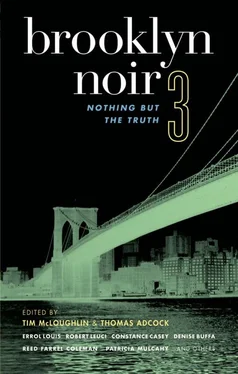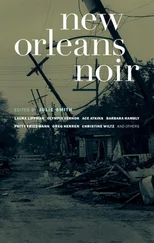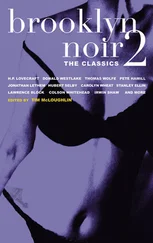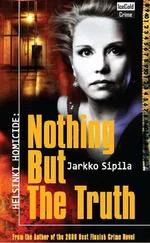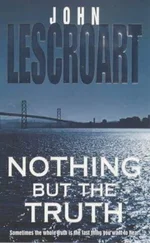Soon enough, the names of cops scrutinized that previous summer during Judge Milton Mollen’s hearings on citywide police corruption would come to blazing tabloid light.
According to the interim Mollen Commission report of December 1993, a pattern began emerging in the department of “invidious and violent character: police officers assisting and profiting from drug traffickers; committing larceny, burglary, and robbery; conducting warrantless searches and seizures; committing perjury and falsifying statements; and brutally assaulting citizens.”
Under favorable plea deals or outright grants of immunity from prosecution by Zachary W. Carter, then the U.S. Attorney in Brooklyn, two officers of the 73rd wasted little time admitting their own guilt — in return for testifying against three of their comrades.
In police parlance, they were rats. The U.S. Attorney’s Office referred to them as government cooperators. Cooperating were Daniel Eurell, 29, and Christopher Banke, 25. Along with confessed dirty cops from other precincts — notably Michael Dowd and Philip Carlucci — Messrs. Eurell and Banke had been interrogated by the Mollen Commission. Also interrogated was Officer Kevin Hembury, yet another confessed Morgue Boy who had bitten the government’s cheese.
In an audio tape not heard at trial, but later quoted in the New York Daily News , Mr. Hembury is heard telling his fellow cooperators that they stood a good chance of making money from Hard Copy or some such tabloid TV show.
With reference to the televised interview of a teenager in love who went to prison for shooting the long-suffering wife of her middle-aged paramour, Joey Buttafucco, Mr. Hembury’s precise words were, “Amy Fisher popped some bitch in the head and got five grand. We’re the Morgue Boys. You don’t think we could get fifty grand?”
In addition to similarly florid testimony, the Mollen Commission staff and investigators for the Brooklyn D.A. and U.S.
Attorney’s Office assembled numerous boxes of documentary evidence in support of narcotics conspiracy charges against the remaining three alleged Morgue Boys.
Accordingly indicted and bound over for trial were Officers Keith Goodman, 29, who operated a part-time insect extermination company; Richard SanFilippo, 28, a bazookaarmed body builder; and Frank Mistretta, known behind his back as “the oldest rookie.”
3. “Look, we’re doing God’s work.”
When Mr. SanFilippo was unable to afford the continued expense of the high-profile criminal defense lawyer who counseled him during the run-up to trial, he turned to a young, good-looking attorney nobody had ever heard of outside of Brooklyn: Joseph Tacopina.
Mr. Tacopina was familiar with the territory. For young Joe Tacopina, Brownsville was an irresistible walk on the wild side, a short ride down Flatbush Avenue on the B33 bus from his parents’ respectable home in Sheepshead Bay. As a prosecutor with the Brooklyn D.A.’s office, he was assigned the borough’s most deadly turf, what his colleagues called the “gray zone” of Brownsville and neighboring Crown Heights.
Recently resigned from the D.A.’s office, Mr. Tacopina had accumulated splendid résumé credits for winning thirty-seven of thirty-eight homicide trials, efforts that were richly educational but which earned him less than $30,000 a year. He decided to switch to the more remunerative field of criminal defense.
When Mr. SanFilippo came his way, the closest that attorney Tacopina had come thus far to actually handling a defense case was carrying the bulging leather exhibit bags for his clients’ original choice of representation — the legendary Bruce Cutler, once banned by a judge from defending John Gotti, the deceased Gambino family don. (In so many words, the judge had accused Mr. Cutler of being the family consigliere .)
When not toting bags, Mr. Tacopina nursed coffee in midtown Manhattan diners and read the tabloids and hoped somebody would ring up the answering service he checked frequently. (Operators were instructed to explain that Mr. Tacopina had just stepped out of the office but would call right back.) Besides perusing the crime blotters, he spent his time worrying about where the money was supposed to come from to support a wife and two babies, not to mention a third one on the way.
So he took a night job at a private club, which allowed him to collect tips for checking coats in an airless room with a Dutch door. Behind the suspended minks and cashmeres, Mr. Tacopina pored through sixteen cartons of evidence in preparation for arguing his maiden defense case.
At trial, star prosecution witness Danny Eurell outlined the Morgue Boys’ modus operandi in rousting the proprietors of neighborhood crack dens and stealing money, merchandise, and available bling-bling.
“Sometimes we got in by verbally threatening people,” he said. “Other times, we would break in using any tools we had — battering rams, crowbars.”
The loot was divvied up before sunrise at the Herzl Street coffin factory. Assistant U.S. Attorney Charles W. Gerber told jurors that the graveyard shift officers “thought they had a license to steal.”
In an interview, Gerber spoke of a precinct house atmosphere that might account for the attitude. “The average age of the police officers was some incredibly low number, like twenty-five,” he said. “You had a lot of kids who grew up on Long Island who had no stake in the community, had no common experiences with the people, no common upbringing. That, to some extent, is a recipe for disaster.
“It’s important that a cop is doing a job because he’s trying to help all those people who every day get up and get into the subway and go to work and make a living and raise families in a tough environment. People who go to church and do the right thing. This is the kind of case you prosecute because it’s the right thing to do.”
Counsel for the Oldest Rookie was Edward P. Jenks, who had grown up in the Williamsburg section of Brooklyn. Which in his youth could not be imagined as the hipster magnet it is today.
“My parents bought this brownstone on Bedford Avenue for seventy-nine hundred bucks. I am not kidding you. I loved it there because the weather didn’t matter, I played handball off the brick wall in the basement,” said Mr. Jenks. “And there was a joint everybody went to called Teddy’s Bar. They kept a pail of wontons you could eat for nothing.
“This’ll blow your dress up. That brownstone I grew up in? It’s going now for a million-two. The owner’s some guy probably down in his wine cellar where I played handball, probably having a pinot grigio.
“And the other day,” he added, “I see in New York magazine that a beer at Teddy’s gets four-fifty now.”
Outside the courtroom, Mr. Jenks and his client would engage in such reminiscences. And sometimes Mr. Mistretta would admit to the difficulties of being a beat cop in Brownsville, old enough to be the father of the youngster cops from Long Island, who didn’t know from handball.
On his client’s behalf, Mr. Jenks explained, “There was some feeling of mistrust from those younger cops. Like, what’s his story?”
Counsel for Mr. Goodman was Stephen C. Worth, a son of Brooklyn who was the borough’s district attorney in the late 1970s. In an interview, he spoke of the disgraced Michael Dowd, the first cop to rat on other cops before the Mollen Commission.
“It was no surprise to me there were drug-using cops like Dowd,” said Worth. “By the sheer force of numbers and the availability of drugs, you couldn’t be surprised about some cops turning out like Dowd.
“You had drugs literally on every corner. There were a million burned-out buildings. It was unbelievable how blatant it was.”
Читать дальше
